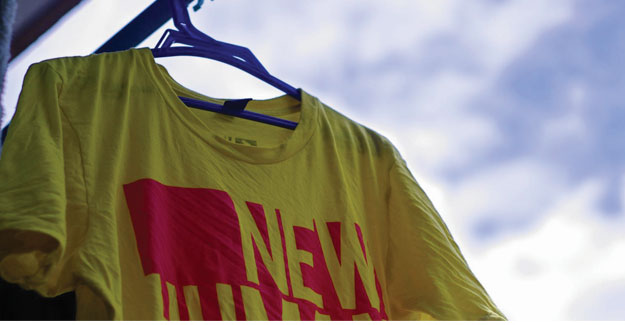
Shifting The Focus From Fibre To Process
A T-shirt made of organic cotton or recycled material is not always more sustainable The data suggests that the common separation into "good" and "bad" fibres, based on generic classifications of fibre types, is too simplified. A much more nuanced view is warranted, in which the separation rather is done between producers with or without appropriate environmental management, and poor or better uses of the fibre, accounting for the environmental performance throughout the life cycle of the final textile product. In other words, an organic cotton t-shirt is not automatically more sustainable than a conventional cotton t-shirt - organic is a good start but you have to consider the entire life cycle of a garment. Dr Sandra Roos, RISE, explains why the life cycle perspective should be considered when measuring sustainability: "When calculating the total environmental impact of a garment, one can not only consider the material used in the garment itself, but also what resources have been used to produce the garment. Even though the garment could be made from recycled fibres, the factory may have used fossil fuels for electricity supply, thereby increasing the garment's total environmental impact." It is important to stress that fibre production relies on energy and materials other than the fibre feedstock, for production of heat, electricity, fertilizers, pesticides, feed, dissolution chemicals, catalysts, and more - these secondary flows are often larger, on a mass basis, than the raw materials used as fibre feedstock. Future sustainable fibres At present, the most sought-after natural fibre is cotton, however conventional cotton fibres need to be replaced since pesticide use and irrigation during the cultivation contributes to toxicity and water stress. There is a range of different so called "new sustainable fibres" on the market promising to replace for example cotton. Nevertheless, the results show that there are no fibres neither on the market today nor developed in lab scale that have the technical feasibility to match the properties of conventional cotton. Furthermore, researchers state that it can be misleading to classify new innovations as "sustainable" since there is a lack of data to assess the entire life cycle. Dr Gustav Sandin at RISE says that the lack of data is a disadvantage when investing in future sustainable textile fibres. "Without such data, there is a risk that investments in new fibre technologies are not made where there are greatest potential gains. There is also a risk that new and better fibres are, in decision-making, undervalued and unappreciated in relation to established fibres for which data on environmental performance and technical properties are available."
Textile Excellence
If you wish to Subscribe to Textile Excellence Print Edition, kindly fill in the below form and we shall get back to you with details.








